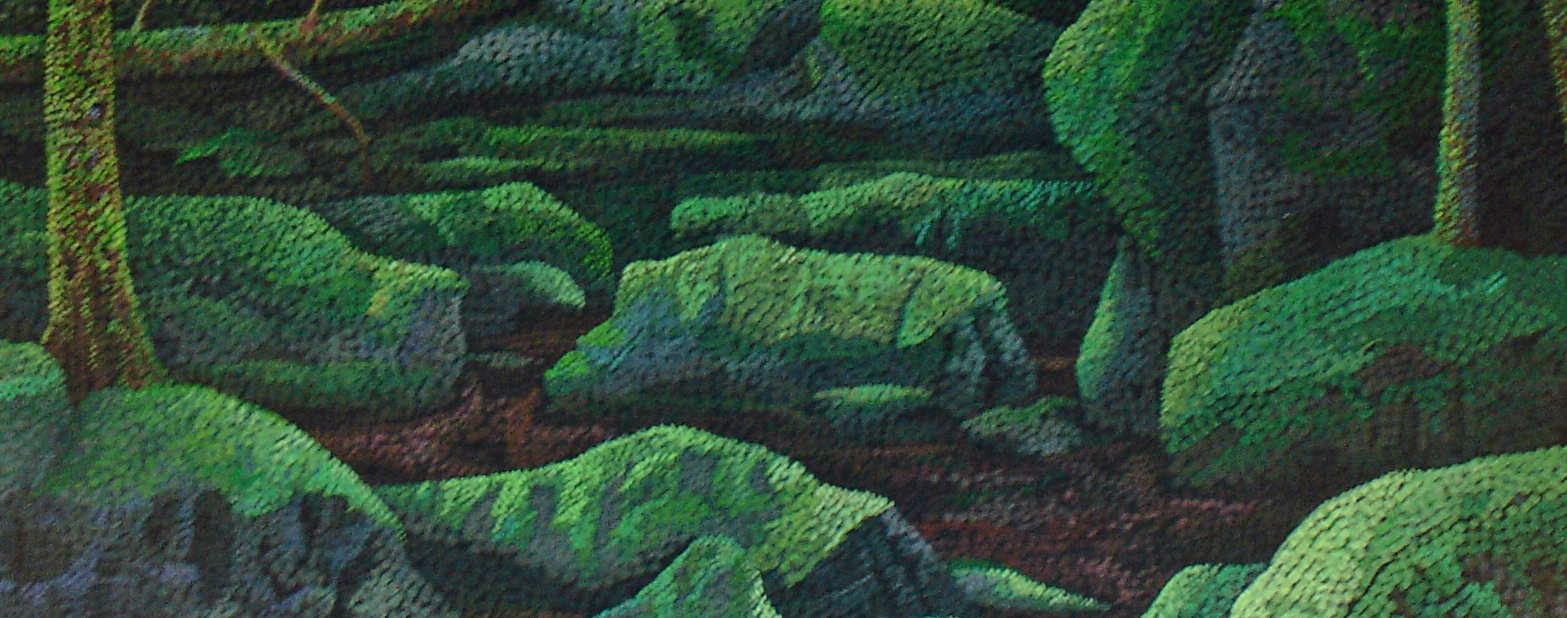
I make paintings one small drop or dab or dot at a time. The small dots (pin head size) evolved from my paintings in the early nineties. Many of the paintings from that period contained passages in which I imitated, using a quarter inch wide flat brush, the qualities of mosaic tesserae see example. Over a period of years, the mosaic areas became more ubiquitous in the paintings and the individual tessera shapes became smaller and smaller allowing for more highly detailed images. My consistent adherence to the dot format today is a self imposed restraint that provides a structure. This structure serves as a consistent format. Whatever else the painting might appear to be about it is always, more or less, about the dot structure that underlies all images. The brush handling technique I use is not quite pointillism, divisionism, nor neo-impressionism. In these styles, small painted dots are used primarily to optically mix colors. I almost never use dots to mix colors; frequently the individual dots do not overlap one another. The dark background on which dots are applied, remains visible. The way I apply paint is a deliberately slow process that allows for control and consistency. Today, I use liquid acrylic or polymer based paints with oil based varnishes. The acrylic paint is not as luminescent as oil paint; it dries flat and dull; the textural qualities are enhanced. My use of gold and silver leaf also provides an intense contrast to the quality of the painted areas. The textures and colors of the paint and canvas are more noticeably when contrasted with metallic surfaces. Beyond this my extensive use of gilding is best explained by stating," I'm bringing the finest special effects of the 15th century to the 21st century viewer."
MB 2012
